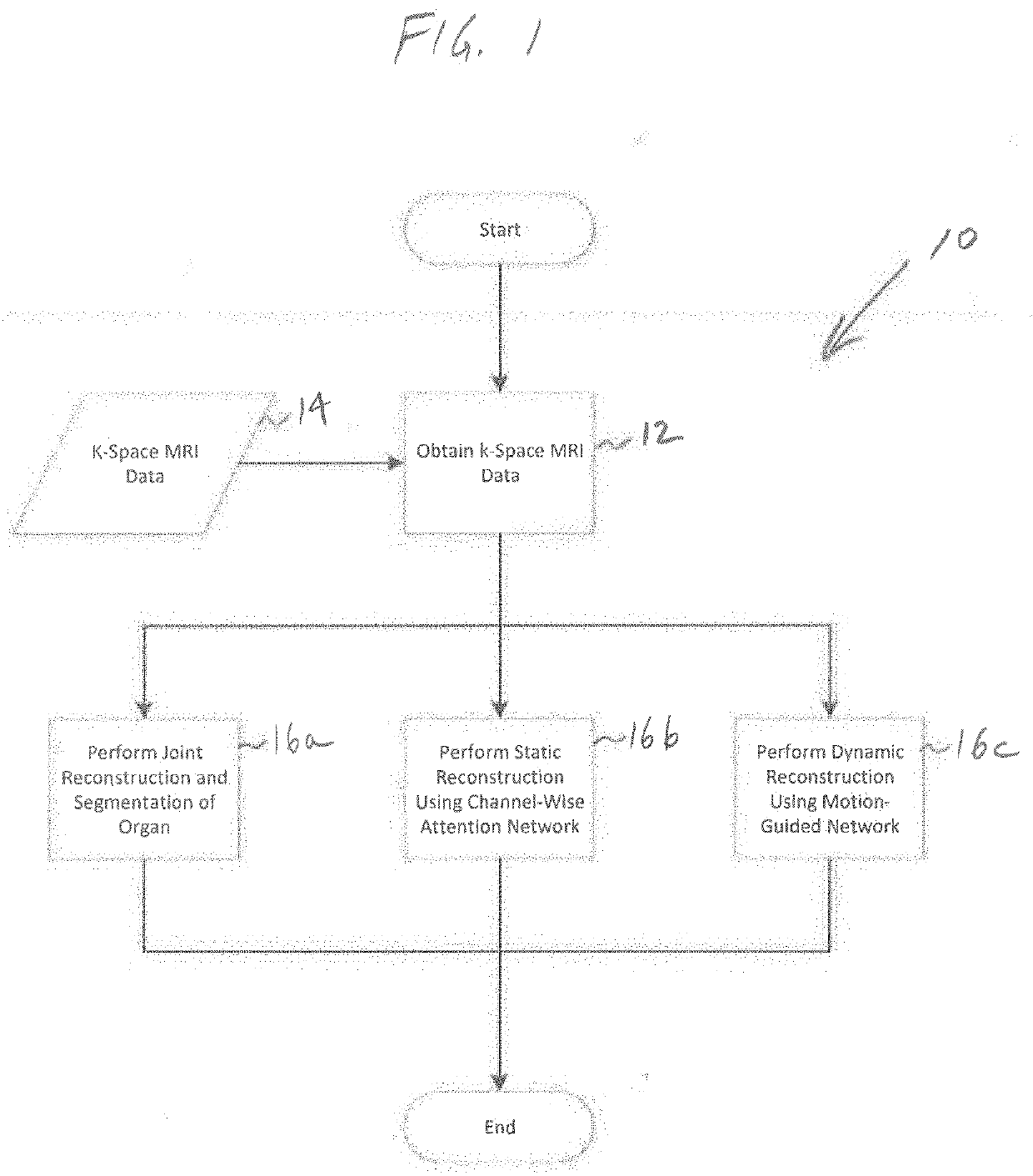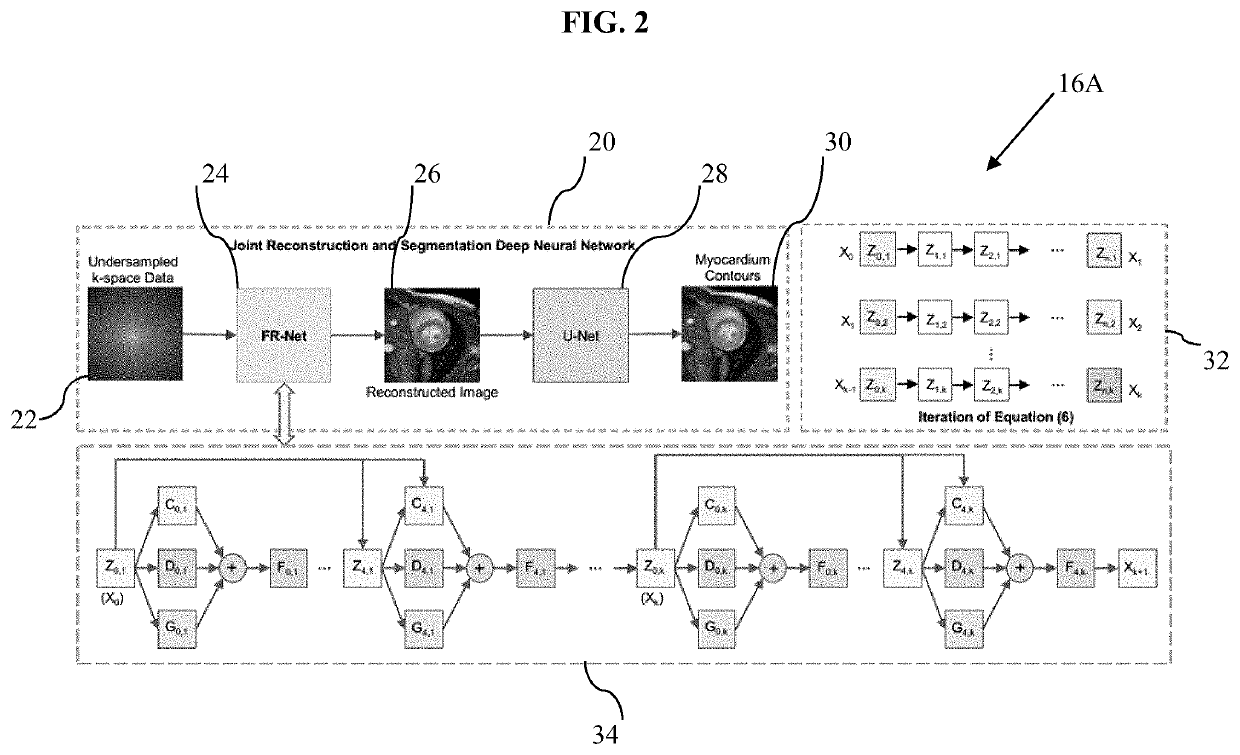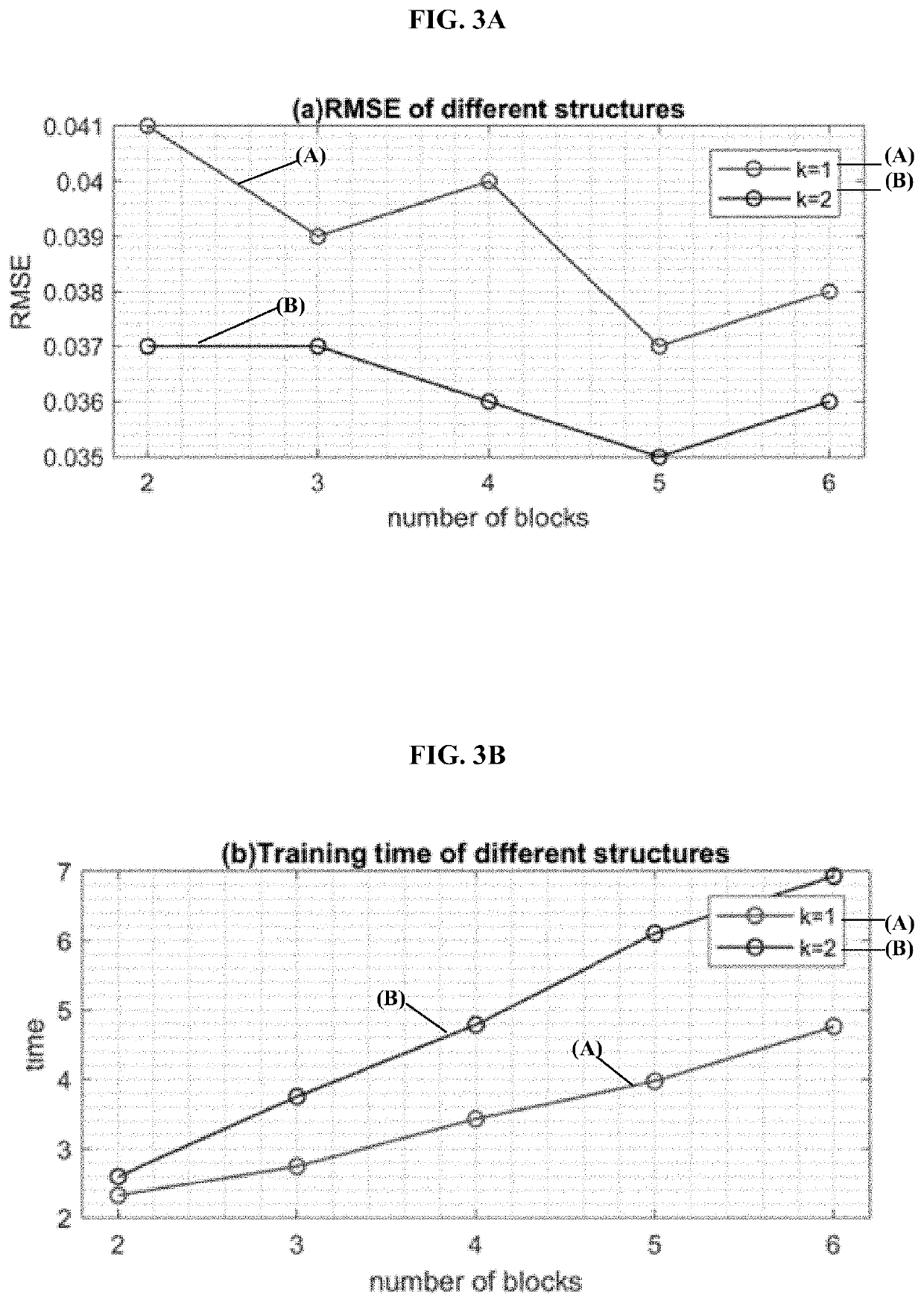Systems and Methods for Joint Reconstruction and Segmentation of Organs From Magnetic Resonance Imaging Data
a magnetic resonance imaging and joint reconstruction technology, applied in the field of medical imaging and computer vision technology, can solve the problems of inability to fully sample mri scans, inability to use cardiac mri, and inability to accurately predict the effect of the patient's health, so as to achieve rapid static and dynamic reconstruction and segmentation.
- Summary
- Abstract
- Description
- Claims
- Application Information
AI Technical Summary
Benefits of technology
Problems solved by technology
Method used
Image
Examples
Embodiment Construction
[0017]The present disclosure relates to systems and methods for joint reconstruction and segmentation of organs from MRI data, as discussed in detail below in connection with FIGS. 1-13.
[0018]FIG. 1 is a flowchart illustrating overall processing steps carried out by the systems and methods of the present disclosure, indicated generally at 10. In step 12, the system obtains k-space MRI data 14 from a suitable source, such as directly from an MRI scanner, from a computer system, and / or from a database of MRI data. The k-space MRI data 14 typically is undersampled data generated by the MRI machine when a scan is performed on a patient. In the past, the k-space MRI data 14 often did not have sufficient information to allow for adequate reconstruction and segmentation of organs in clinical applications, including both static and dynamic reconstruction and segmentation. Importantly, the three joint processes 16a-16c of the systems and methods of the present disclosure, discussed in more d...
PUM
 Login to View More
Login to View More Abstract
Description
Claims
Application Information
 Login to View More
Login to View More - R&D
- Intellectual Property
- Life Sciences
- Materials
- Tech Scout
- Unparalleled Data Quality
- Higher Quality Content
- 60% Fewer Hallucinations
Browse by: Latest US Patents, China's latest patents, Technical Efficacy Thesaurus, Application Domain, Technology Topic, Popular Technical Reports.
© 2025 PatSnap. All rights reserved.Legal|Privacy policy|Modern Slavery Act Transparency Statement|Sitemap|About US| Contact US: help@patsnap.com



